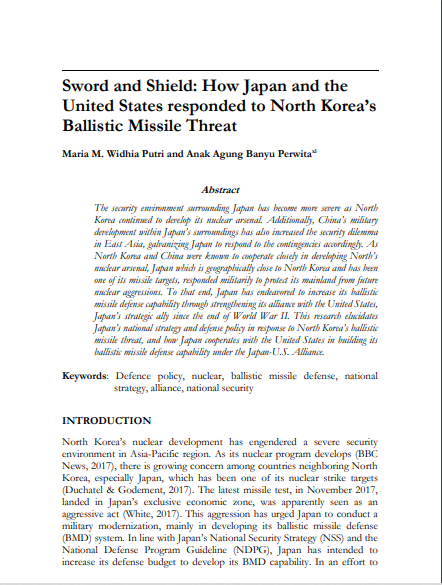Sword and Shield
How Japan and the United States responded to North Korea’s Ballistic Missile Threat
DOI:
https://doi.org/10.54945/jjia.v1i3.82Keywords:
Defence policy, Nuclear, Ballistic missile defense, National strategy, Alliance, national securityAbstract
The security environment surrounding Japan has become more severe as North Korea continued to develop its nuclear arsenal. Additionally, China’s military development within Japan’s surroundings has also increased the security dilemma in East Asia, galvanizing Japan to respond to the contingencies accordingly. As North Korea and China were known to cooperate closely in developing North’s nuclear arsenal, Japan which is geographically close to North Korea and has been one of its missile targets, responded militarily to protect its mainland from future nuclear aggressions. To that end, Japan has endeavored to increase its ballistic missile defense capability through strengthening its alliance with the United States, Japan’s strategic ally since the end of World War II. This research elucidates Japan’s national strategy and defense policy in response to North Korea’s ballistic missile threat, and how Japan cooperates with the United States in building its ballistic missile defense capability under the Japan-U.S. Alliance.
Downloads
Metrics







